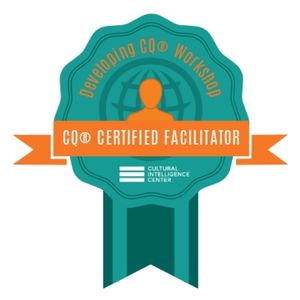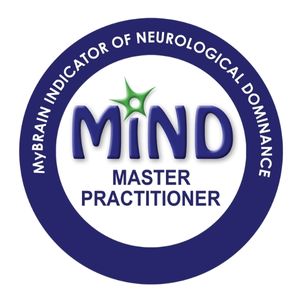Listen here:
Watch here:
How do you feel about office politics? Frustrated? Manipulated? People playing games? Making power plays?
Office politics can be destructive if there is negative intention, however workplace politics is a reality in most organisations- how projects are approved, people move forward and things are done.
So what if we reframe it as human connection success factors, a way for you to navigate the workplace to connect with people to support your success?
This is a vital skill to steer your career, and build your influence, impact and relationship capital.
What you will learn in this episode:
- Understanding office politics
- Start with observation
- The hidden influencers in your organisation
- Identify your Influence Matrix
- Managing peer to peer
- Managing upwards
- Influence is not only what happens in the meeting
- The 3-point approach
Find out more:
Transcript:
Hello and a very warm welcome to today’s episode with me Victoria Rennoldson, and I’m really excited to talk about today’s topic, which is: office politics: navigate your workplace. Now, I know that even by saying the phrase ‘office politics’, you probably have some quite strong associations and images in your head. So let me ask you: what are you thinking about? Maybe you are thinking about times when people have been playing games. Perhaps when people have been making power plays or playing certain people off each other. Perhaps you see office politics as negative, frustrating, and manipulative. When I’ve done some research around this, I know these are very common associations with the idea of office politics. And for sure, if there is a negative intent behind somebody’s behaviours and communication style, then of course, this can come across in this way. And certainly, it can lead to very undesirable outcomes within an organisation, such as bullying, excluding certain individuals or groups, intimidating people, and blocking people’s projects or even career paths. This type of office politics clearly is not what we’re aiming for. However, I want to present a different point of view on office politics today.
The phrase ‘office politics’ is laden with all these associations, so what if we did reframe it? What if we rebranded this idea of office politics as: human connection success factors? I.e. they are a way for us to recognise how we connect with people, human to human. How do we really understand what’s going on in reality, in an organisation? Because no matter what organisation you work for, whether we’re talking about a highly commercial company, whether we’re talking about academia, whether we’re talking about not for-profit, or any other type of organisation, there is always going to be some level of politics at play. And it is really important for you to understand this, because this is critical to your impact, it’s critical to your influence, how you get your work delivered, you get people to say yes to your projects, it’s also really critical to how you as a person, as an individual, are perceived within that organisation. What is your professional reputation? How do people see you, and how you add value to the organisation? And how, ultimately, is this helping you in your career, in your ambitions for what you want to achieve in your next career step? So, we need to learn this. And I know that for, if you’ve worked in maybe at least one organisation, you’ve probably had that sense, when you’ve joined a new place, about how you have to relearn the rules, you have to understand the ways of working, and how people get things done. This is exactly what I’m talking about.
So how do we do this? How do we positively navigate the office politics, in a way that is genuine authentic, and has that objective of human to human connection? With a couple of ideas that I want to share here today. And to start with, I don’t want you to do anything at all. In fact, what I want you to do is to observe – to really observe how things really work in the organisation. That means, not what is written on the organisational chart, on the structures of who does what and who reports to who, but really observe what goes on in your meeting rooms. Observe the interactions, and understand who’s got the real influence here. What you might find is that there are hidden points of influence. People who, although they are not the ultimate decision maker, have very strong points of view, or very strong influence on those decision makers. So it’s really important to understand how the organisation works, what that looks like. From there, you can then put together your Influence Matrix.
Now, if you grab a piece of paper and a pen, or you can hit pause now and then come back with this, then what I would like you to do is to draw four boxes on your piece of paper. So literally, a two by two, so you’ve got two boxes at the top and two boxes on the bottom. And I want you to think about yourself starting in the bottom left. So I’ll try and do that on screen for those of you watching the video, bottom left. And I want you to think about, first of all, going horizontally, like this. So thinking about across, in your Influence Matrix, who are the key influencers in your peer group? So people usually at your level, or roughly your level, within the organisation, who are the key influencers. Who are those people who are going to be talking to the decision makers, and therefore are very important to be keeping on board, making sure that they are up to date, understand what you’re doing, how you’re doing it, and why you’re doing it. So think about that approach – the peer-to-peer angle. It really does mean that it’s an important job for you to invest time spending time with them, understanding what they see in what you’re doing, in your projects, understanding their points of view, their questions, any resistance points that you can resolve with them. Ideally, you want to be working with them in a way that you end up being aligned, so that when they are talking to their senior managers, when they are talking to the key decision makers, it’s very clear, when they move upwards, that they are on board, they support what you’re doing. So this is the first line of the Influence Matrix.
The other line, which goes upwards, you can probably guess by now, is managing upwards, through your own senior managers, top to top. So really thinking about: how do you align with your own senior managers in your team? How can they help you influence top to top with their own peers, the senior decision makers? And, in some ways this should be easy, there should be an alignment if you’re in the same team, but don’t forget about spending enough time framing your ideas, so that that senior manager has a really clear point of view about how to talk about your projects, your ideas, with the key decision makers. Now, if you want to know how to do that, I did that, actually shared a frame with you in an episode, actually was last week in fact, so I will put a link to that episode in the show notes, and that would be a great one to go back to listen to after this episode. So there you have your Influence Matrix – you’ve created your two by two, you’re very clear about which of your peers you need to talk to, to really align with, to influence, to get them to help you influence decision makers. Then you’re thinking about how you influence upwards, so manage upwards, and also get their support to manage top to top. So this is really about creating allies, making sure that people understand what you’re doing, how you’re doing it, why you’re doing it, and that before you even step into a meeting room to get a decision on something you’re working on, there is a full force of support behind you. So this is Part one.
Part two, for me, is thinking about, with your kind of politics, if you want to call it that, you have a three-part approach to navigate getting people to support you. This means that what happens in the meeting room is only a really, maybe a small part of the picture. The three part approach is really ‘before’, ‘during’ and ‘after’. So, before the meeting, before let’s say you have a big project that needs to be signed off, navigating the office politics might look like some of the things we’ve talked about already. So thinking about understanding people’s motivations, their drivers, their priorities, listening really well to their questions, and making sure questions are answered before you even get into the meeting room. It might also look like sharing information or data, or even reports, before you get into the meeting room, to help influence and get people closer to ‘yes’. So don’t underestimate this stage, you have a lot you can be doing before you even walk into a meeting room, to navigate the situation, to create the human connection, that people really understand what it is you’re trying to achieve. And that can be done in a number of ways, whether that is formally, via written means like emails or share points, or more informally, having a coffee chat with somebody, to bring them up to date, dropping by their desk, if you’re physically in the same location, or potentially even in more kind of social environments, in networking, or even in social events itself.
The other part before the event, before the meeting, is really thinking about how people perceive you in the organisation. This is really thinking carefully about your personal brand, and how people, if you like, ‘buy into you’. How they see you, observe you. How they see your credibility, and the authority that you bring in your area, and the value that you bring. This trust factor is so critical. Again, if you’ve work hard on this before you get into meeting rooms, to get people to support you, whatever it is that you’re asking for their support on, you have so much a greater chance of success. So do not neglect this part of the puzzle – remember that cultivating your personal brand is not necessarily again, about playing games, it is absolutely about being known, and people recognising, acknowledging, the amazing work that you’re doing, the amazing person that you are, and what you bring to the table. So this is about before – clearly being ready for the meeting itself, making sure that you’re able to connect with people human to human, I’ve already mentioned on a recent episode on framing your ideas. I’ve also talked, in previous episodes, about how you can connect well with people and engage your stakeholders, so again, I’ll put a link to that episode in the show notes. But I really want now, to spend a bit more time talking about what happens after the meeting. Too often, I see people talk about: ‘the meeting is the key point, once you walk out the room, the conversation is over’, but this is far from the truth. In fact, you still have many opportunities to connect, to build a conversation, to answer questions, to move through any resistance points from your decision makers. That’s because, again, you need to think creatively about how you connect human to human with people. So thinking about those formal and informal ways that you can continue this conversation, and get you much closer to ‘yes’. Again, through methods like coffee chats, dropping by somebody’s desk, having a quick follow-up call with somebody to answer any questions that are remaining – so don’t neglect the three parts. The meeting isn’t just what happens in the room, there is before, during and after, as well.
So let me ask you: how are you thinking about office politics today? How are you really considering it now, as human connection success factors? What do you need to work on? Is it your Influence Matrix, and cultivating the relationship capital, and the time that you spend with people? Or maybe for you it’s about really thinking about this three-part approach, before, during, and after a meeting, to get you so much closer to the success that you want, in your projects, in your career ambitions, and in the way your reputation is building within an organisation. I would love to know what really resonates here today. And if you know somebody who would benefit from this, maybe they are struggling with navigating the workplace politics, or unclear about how to improve their resonance and impact in an organisation, then this is the episode for them, so please feel free to share this episode. Whether that is a colleague, somebody junior in your team, or even somebody you know outside your current organisation.
Now, if this is a topic that has connected with you today, and you know you need to get better at this, this is part of what may be holding you back from making it through to your next level in your career, making it towards being a leader that you’re aspiring to be, then I have a free gift for you. I have created a 7 part series, a mini training called ‘7 Strategies for Communication for Global Leaders’. And I would love to give this to you. You would sign up, and then what you’ll receive is a mini training, once a day, for seven days. The people who have experienced this find this very very powerful, and it’s a great way for you to accelerate your skills in this area, to really improve, elevate, and amplify your leadership communication skills. Now, if you’d like to get a hold of that, all you have to do is look at the link in the show notes, or feel free to reach out to me on LinkedIn, my personal profile over there is Victoria Rennoldson, and you can direct message me with the word ‘leader’ and I will send it to you. So that’s it for today, I hope this has been valuable to you, I really enjoyed talking and sharing my ideas and strategies to help you with office politics, and help you navigate the workplace, and I very much look forward to seeing you next time, on Cultural Communication Confidence.




